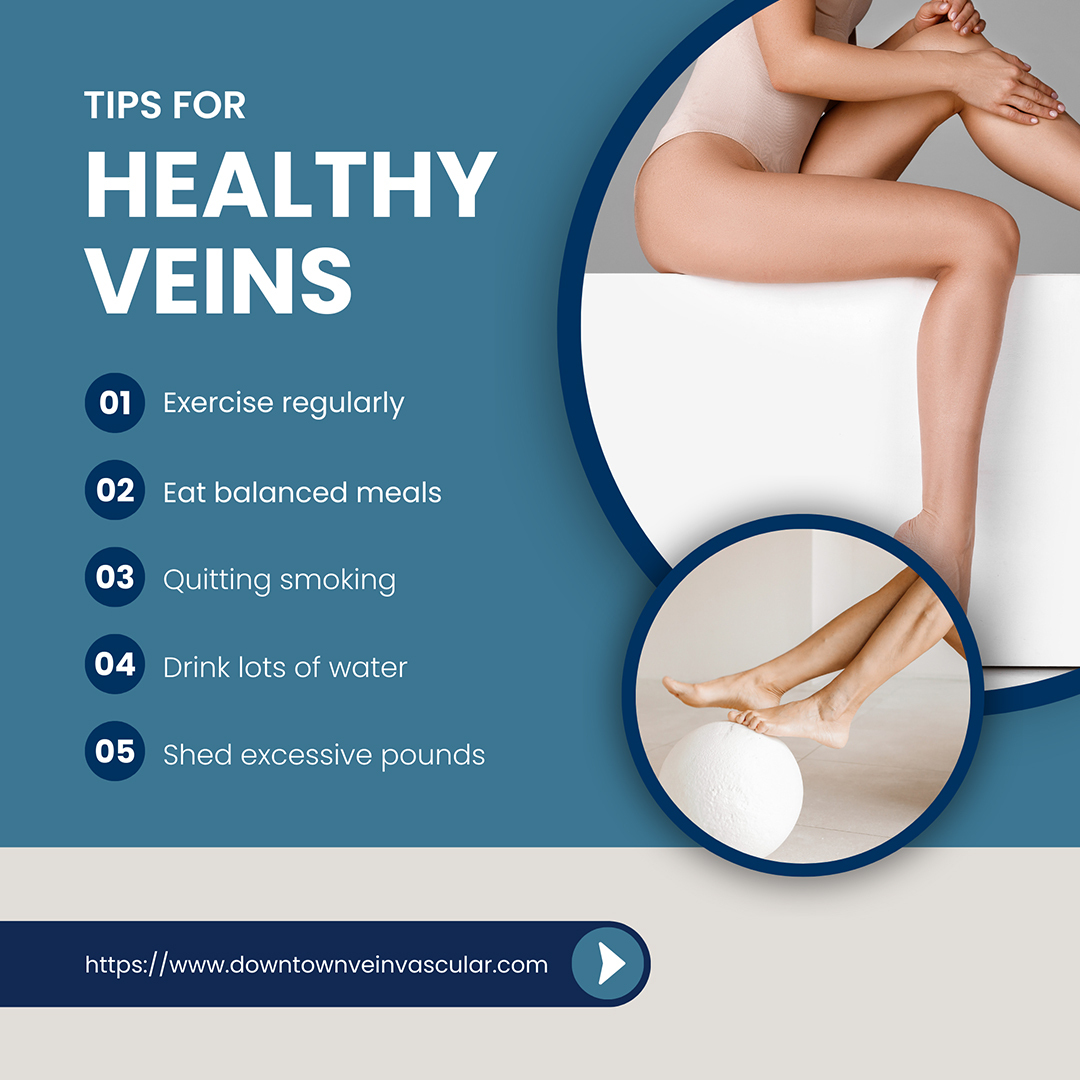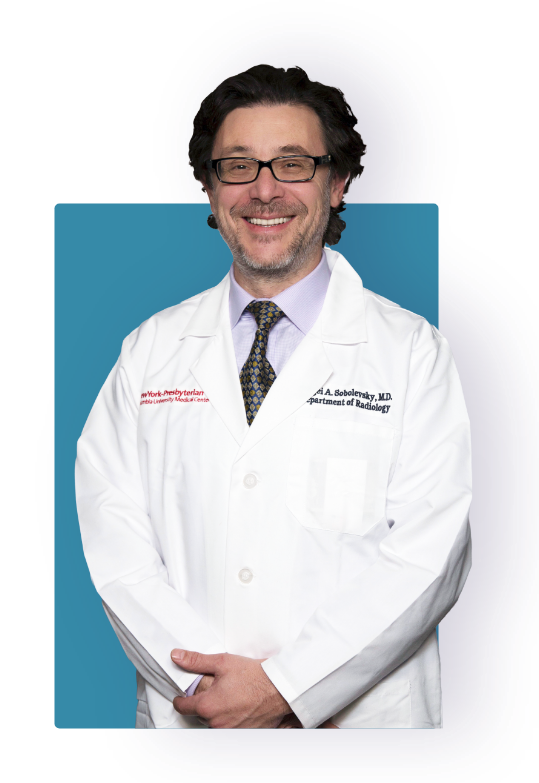If you notice any sudden change in the appearance or color of your veins or if something feels different, do not waste time visiting a vein specialist. The earlier you get it checked, the better chances you have of preventing complications. Dr. Sergei A. Sobolevsky is an experienced and board-certified endovascular specialist and uses the most advanced diagnostic tools to determine the reasons behind your blue veins and their possible causes. He comes up with minimally invasive treatment options if your blue veins are resulting from any venous conditions and helps you get back to normal, active life within a short time.
Many people underestimate the importance of healthy veins until they notice pain, discoloration, or swelling on their hands and feet. It becomes tough to maintain good health if your veins are damaged and not doing their job right. When blood cannot move upward towards the heart and begins pooling in the legs, it could give rise to several issues, including varicose veins and venous insufficiency.
What are Blue Veins?
The vascular system, also known as the circulatory system, is a complex structure made up of arteries and blood vessels that carry blood around the body. The purpose of this system is to deliver oxygen and nutrients to the body tissues while taking away waste matter from these areas.
While the blood they carry is red, often the veins appear blue and in some cases green, which is confusing. Usually, blue veins are nothing to worry about, particularly if you have been born with them or they developed with age. But sometimes, they can be a sign of poor vein health or indicate some underlying medical condition. It is best to get them checked to rule out any complications.
Read on to find out what blue veins indicate and what warning signs you should look for. A vein specialist explains why your veins are turning blue and how you can keep your veins healthy, so you don’t find yourself suffering from any venous issues in the future.
Read more: Why Are The Veins in My Feet Bulging?
Causes and Symptoms of Blue Veins
Blue or dark-colored veins can be normal and healthy too, even though they appear strange, especially if they are near the surface of the skin, and seem to be popping out.
Vein specialists explain that veins look blue because of the way our eye process light waves and color. When red light hits your skin, its longer wavelengths reach deep into where the veins are located. The red in the veins absorbs the light. Blue light does not travel as deep as red light due to its shorter wavelengths. This means it is deflected from the skin. Our eyes catch that deflection and process the blue. Hence, the veins look blue instead of red.
Blue veins are common on the chest and legs.
Other factors that may affect the color and visibility of the veins include:
- Genetics
- Skin color
- Medical conditions
- Hormones
- Rapid weight loss
- Exercise
It is essential to keep an eye on your vein color and get yourself checked by a specialist if you notice any unusual changes. Vein disorders are not life-threatening, but they can compromise your quality of life and lead to painful symptoms.
Are Blue Veins Healthy?
If you have always had blue veins, chances are you don’t have much to worry about, as this is how they are. However, if you see blue veins appearing over some time or other unusual symptoms accompanied by blue veins, it could be a sign of some underlying medical condition.
According to a vein specialist, you must get that strange vein color check out if:
- You have never had blue veins before – If a vein suddenly and rapidly turns blue, it could be a sign that blood is pooling in your circulatory system or there is a clot deep within the vein, known as deep vein thrombosis.
- The vein color is changing – If your vein color is changing from blue to darker blue, purple, or even green it may be a sign of venous insufficiency.
- Your blue veins are accompanied by ulcers – If you notice blue veins in your legs along with ulcers, it indicates a venous disease.
- Your veins are hurting – If your blue veins begin to ache and swell, or the nearby area is also tender to touch, it may be a sign of some underlying medical problem.
Read more: Visible Hand Veins and Why You Have Them
Are Bulging Blue Veins Dangerous?
Almost everyone has blue veins, which are normal. However, very visible, bulging, and twisted blue veins may indicate a vein disorder. This is not something you should take lightly, as vein disease can lead to serious complications.
Keep an eye out for unusual vein symptoms:
- Gnarled, raised veins
- Swelling in legs and ankles
- Heaviness in legs
- Dry, hardened skin on legs
- Cramping or aches in your thigh and calf
- Leg pain that dissipates after walking
If you are experiencing any of these symptoms along with bulging blue veins, seek medical assistance before your condition worsens. Cramps or pain in your legs that does not get better or results in skin discoloration may be a sign of varicose veins. If left untreated, vein damage can lead to life-threatening conditions such as deep vein thrombosis, chronic venous insufficiency, or pulmonary embolism.
Tips for Healthy Veins
If your blue veins are not causing any pain, discomfort, or skin discoloration, chances are that your veins are healthy, and there is no cause for concern. Furthermore, you can keep your veins healthy by practicing habits that support normal blood flow and vein health.

Top tips for healthy veins include:
Exercise regularly
You can ensure good vein health by staying active. Exercise gets your blood flowing and helps to improve circulation, preventing venous issues. Even something as simple as walking for a few minutes can make a big difference. If you have a desk job, get up after a few hours and walk around to keep the blood pumping.
Eat balanced meals
Your body is made up of what you eat. When you put nutrition-rich food in your body, these nutrients work with your body to boost your health. By eating a healthy diet, you can maintain a healthy weight that keeps the pressure off the veins and helps them function better. Fruits and vegetables are great for circulation and strengthening vein walls.
Incorporating the following foods into your diet is essential for vein health:
- Leafy greens such as kale, spinach, and collard green
- Antioxidant-rich snacks such as blueberries, strawberries, pecans, and dark chocolate
- Healthy fats such as avocados, olive oil, and salmon
Quitting smoking
Smoking not only damages the lungs, but also increases the risk of venous diseases. The chemicals in tobacco remove oxygen from the blood and thicken it, making it difficult for the blood to flow normally. It damages the blood vessels. Also, nicotine hardens and narrows the arteries, increasing the risk of blood clots, which leads to vascular diseases and coronary heart disease. Quitting smoking improves the function of your veins and keeps lungs and other organs healthy too.
Drink lots of water
Water is great for your body and helps you stay healthy. When you are hydrated, your blood is thinner and flows better. Thicker blood due to dehydration can worsen venous insufficiency problems. Thinner blood also prevents clotting or cramping, which usually results from vein issues.
Read more: What You Should Do When You’re Bleeding from Varicose Veins
Shed excessive pounds
Extra weight puts a strain on your heart and organs, which can lead to venous issues. The veins furthest from the heart, particularly in your lower legs have the toughest job as they must fight gravity and your weight to move blood to the heart. If you are overweight or obese, it adds even more pressure on the veins in your lower legs, resulting in problems. Losing weight can alleviate vein-related pain and swelling and keep them healthy.
Healthy veins are crucial to living a good life, free of pain, and help you perform daily activities without any disturbance. The earlier you catch and manage vein problems, the better results you can expect. A top rated vein specialist can diagnose your condition and prescribe the best medication and lifestyle changes to follow.
At Downtown Vein & Vascular Center, you can look forward to specialist advice and advanced vein care to strengthen your veins and avoid future trouble. Dr. Sergei A. Sobolevsky examines your veins carefully, figures out the possible causes behind their changing appearance or size, and helps you feel comfortable. With his experience and expertise in vein disorders, Dr. Sobolevsky recommends the best medication and lifestyle changes to improve your quality of life. He also performs minimally invasive procedures to stop further damage to your veins and prevent this problem from recurring.

Sergei Sobolevsky, MD, is a leading specialist in endovascular medicine with experience in vascular and interventional radiology. Dr. Sobolevsky has decades of experience in the field, with over 25,000 procedures performed, accumulating extensive experience in image-guided minimally invasive medicine, diagnosing and treating a range of conditions.
Dr. Sobolevsky earned his Doctor of Medicine (MD) degree in 1997 from the University of Colorado School of Medicine. He received his specialty clinical training in vascular and interventional radiology at Harvard University. Later, he earned his MBA from the MIT Sloan School of Management. Recognized as a Castle Connolly Top Doctor and named to the Top Doctors New York Metro Area in 2020, 2021, and 2022, Dr. Sobolevsky is licensed in multiple states, has delivered presentations at numerous institutions in the US and abroad, and now acts as a clinical advisor for the biomedical industry. He also held multiple positions in the field during his career, including Chief of Vascular and Interventional Radiology at the Columbia University Medical Center in New York, NY, Senior Vice President in Clinical and Regulatory Affairs at Artann Laboratories in North Brunswick, NJ, and Medical Director at the American Endovascular and Amputation Prevention Center in Brooklyn.
More About Dr. Sobolevsky
